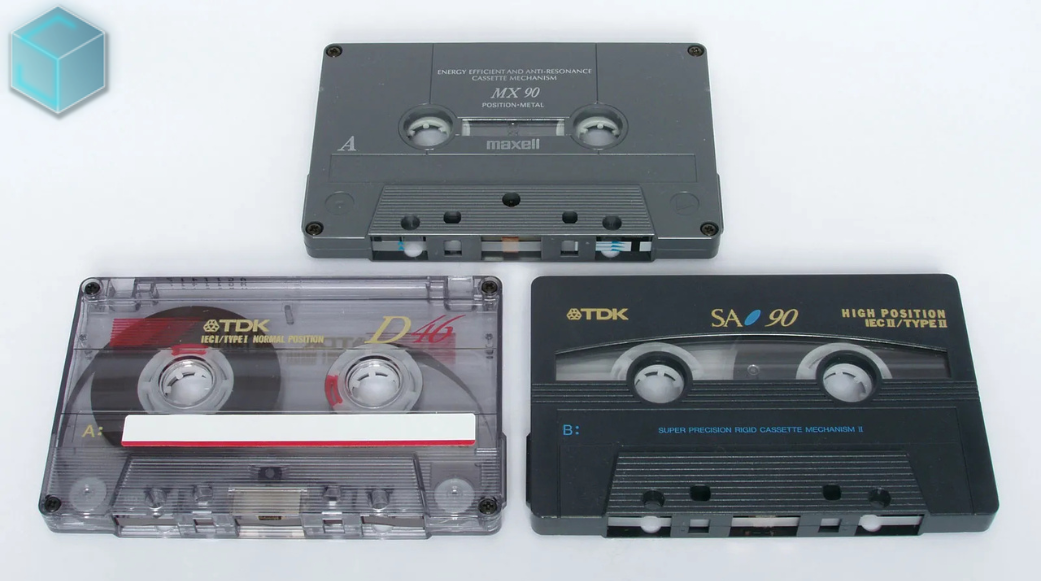
October 23, 2025
Discover how Mix Master strengthens your brain just like an instrument - training focus, creativity, and emotional intelligence through the science of sound.
Read more.png)
September 8, 2025
Tools like Suno are now powerful enough to generate melodies, lyrics, and even full songs in seconds. That’s exciting—and controversial. Just ask Timbaland. Recently, he came under fire..
Read more
August 23, 2025
The 1980s and 1990s analog music medium known as cassette cassettes is experiencing an unanticipated comeback, with Gen Z spearheading the trend. Taylor Swift, who included cassettes in the release...
Read more
August 23, 2025
This week's most notable headline: Doja Cat's erotically charged, '80s-inspired music video, "Jealous Type," is dominating social media feeds and cultural discourse, marking her most daring...
Read more
August 23, 2025
J-hope and GloRilla's "Killin' It Girl," a spectacular blend of K-pop flare and shameless hip-hop heat that has taken the world by storm, is this week's winner of the Best Collaboration of Summer...
Read more
August 23, 2025
Carly Rae Jepsen is giving fans the ultimate gift for the 10th anniversary of her critically adored album Emotion: a special edition featuring four never-before-heard tracks and two fresh remixes...
Read more
August 23, 2025
The wait is over, ARMY! BTS is officially back together and balancing work and play in their first moments of reunion after completing mandatory military service. J-Hope sent fans into a frenzy...
Read more
August 23, 2025
Christian music stepped outside of its quiet comfort zone in 2025. "Hard Fought Hallelujah," a worship song by Brandon Lake, went platinum, sold out festival stages, and exploded from churches to...
Read more
August 23, 2025
In late July 2025, Christian artist Forrest Frank (of Surfaces, now a solo juggernaut in faith-pop) posted from a hospital bed: he’d fractured his L3 and L4 vertebrae in a skateboarding accident...
Read more
August 21, 2025
On September 16, the masked metal phenomenon Sleep Token will embark on their 2025 "Even In Arcadia Tour" across North America. The 18-show tour, which includes a huge date at Brooklyn's Barclays...
Read more
August 21, 2025
Due to a line dance that went viral and won over fans' hearts both inside and outside of the United States, 22-year-old Tre Little's song "Boots on the Ground" has become a cultural sensation this...
Read more
August 21, 2025
In addition to preparing for her next album, The Life of a Showgirl, Taylor Swift is reviving the physical medium this week by putting her songs on cassette tapes. This sentimental action...
Read more.png)
If you’ve just stepped into the world of music production, vocal stutters can be a fun and impactful technique to add excitement and energy to your tracks. You’ve heard that fast vocal stutter at the 0:28 mark of the song, and now you’re wondering how to recreate it in your own music. Don’t worry—this effect is easier to achieve than it might seem!
Let’s break it down and take inspiration from a famous producer who’s a master of this technique: Skrillex.
First things first: you need a vocal sample that you want to stutter. The ideal vocal clip should have a clear, distinct sound, whether it’s a single syllable or word. In the song you referenced, the stutter occurs on the phrase “heee.” The key is to isolate this part of the vocal.
Once you have your vocal sample isolated, it’s time to create that stutter effect. There are two main ways to do this:
Skrillex’s ApproachSkrillex is known for his aggressive and innovative use of vocal stutters in his music. In tracks like "Scary Monsters and Nice Sprites," Skrillex masterfully chops and repeats vocals to build energy before the drop. He often combines manual stuttering with plugins, using precise timing to create a glitchy, rhythmic burst of sound that leads into the next section. His creative manipulation of vocals is what makes his stutter effects so memorable.
After creating the stutter effect, you can elevate it by adding additional effects:
Skrillex’s ApproachSkrillex doesn’t just stop at stuttering the vocals; he enhances them with a range of effects. He often applies pitch-shifting to make the stutter feel more fluid and evolving, while using filters to sweep through the sound, creating anticipation. This layering of effects adds complexity and depth to his music, making each stutter feel like an integral part of the track’s energy.
One of the most critical aspects of a successful vocal stutter is its timing and placement in the song. In build-ups, the stutter should create anticipation and tension, leading to the drop. The timing should be in sync with the tempo and rhythm of the track.
Skrillex’s ApproachSkrillex is a master of placing stutters at the perfect moment in his tracks. He uses the technique to add rhythmic interest and build tension before the drop. His stutters are always precisely timed, ensuring they fit seamlessly within the beat while driving the energy forward.
There’s no right or wrong way to create a vocal stutter, so don’t be afraid to experiment. Try varying the length of the stutter, layering different effects, and playing around with pitch and timing. The more you experiment, the more unique your stutters will become.
Vocal stutters are a powerful tool for creating energy and anticipation in your music, especially during build-ups. Whether you choose to manually chop and arrange your vocal samples or use plugins for automation, the key is to experiment and tailor the effect to suit your track’s vibe.
Start with a strong vocal sample, manipulate it through sound design, and apply effects to bring it to life. As you practice, you’ll develop your own unique style, just as Skrillex did, using vocal stutters to build excitement and drive his tracks to new heights.
Have you tried creating vocal stutters in your tracks? Share your tips or challenges in the comments below!